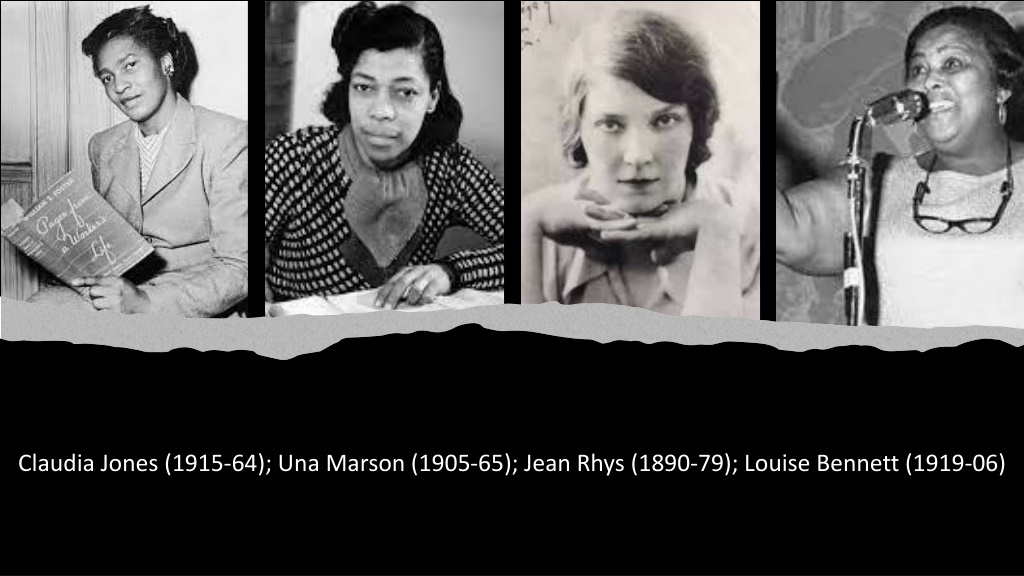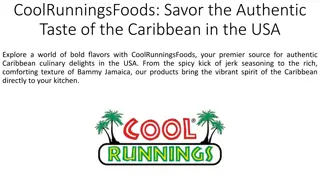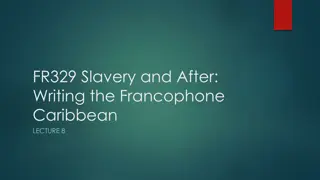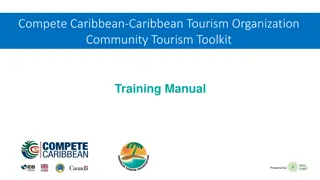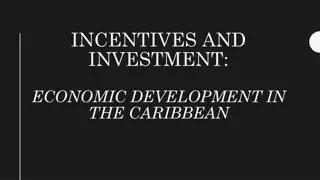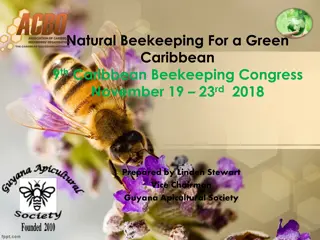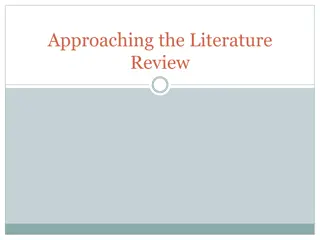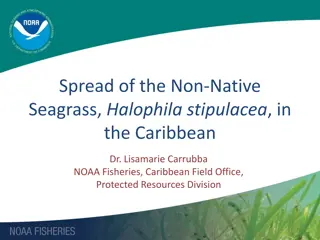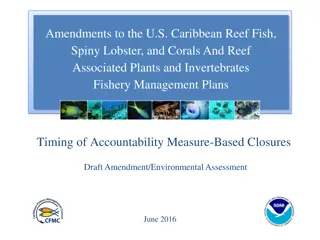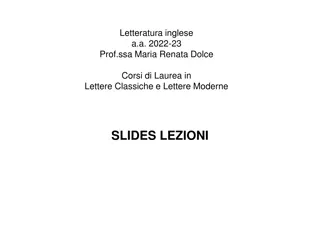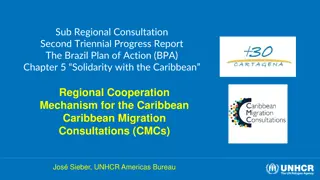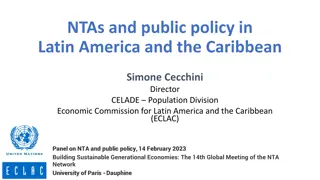Portraying Caribbean Life Through Literature
In this diverse literary collection, writers like Claudia Jones, Una Marson, Jean Rhys, Louise Bennett, Stephen Cobham, Rupert Gray, Kathleen Archibald, and Martin Carter offer glimpses into Caribbean life. From bustling railway stations to pondering the mysteries of daily activities, and exploring the dichotomy of beauty and harsh realities in cane fields, these works paint a vivid picture of the Caribbean experience.
Download Presentation

Please find below an Image/Link to download the presentation.
The content on the website is provided AS IS for your information and personal use only. It may not be sold, licensed, or shared on other websites without obtaining consent from the author.If you encounter any issues during the download, it is possible that the publisher has removed the file from their server.
You are allowed to download the files provided on this website for personal or commercial use, subject to the condition that they are used lawfully. All files are the property of their respective owners.
The content on the website is provided AS IS for your information and personal use only. It may not be sold, licensed, or shared on other websites without obtaining consent from the author.
E N D
Presentation Transcript
Claudia Jones (1915-64); Una Marson (1905-65); Jean Rhys (1890-79); Louise Bennett (1919-06)
Stephen Cobham, Rupert Gray: A Tale in Black and White (1907): The Port-of-Spain Railway Station was the scene of hurrying and hustling. Cabs kept arriving in an endless procession. [. . .] Men with umbrellas and hand-bags crossing from the restaurant opposite hastily consulted their watches. The gong clanged everlastingly of each tram car as it circled past. [. . .] There out in the distance on the southernmost confines of the shipping, a great ocean liner rode at anchor. [. . .] Already industrious Indian matrons red-spittled Madrassees armed with buckets, were boarding the united chariots ere their wheels grew cold. A watering cart followed in the wake of a heavy stone-crusher along the convex street, improving on the recipe Sir John McAdam gave to the world. [. . .] Off yonder a stupendous crane wheels lazily for ever, its half-greased mechanism creaking and groaning. [. . .] Smart-looking youngsters busy themselves between Customs, or bank and counting house, with red-marked paper bags of money. (7, 18)
Kathleen Archibald, Clipped Wings (1937): They rise and go towards the fish market to see the seines being dried near there. They rotate from there back to the wharf. They look at lumber being landed, also bricks and lump-coal. Men sit there with tally-books. At the end of St. Vincent Street is a crane at work on the jetty and alongside is drawn up a small steamer which they know goes to Tobago. That they know and all about the lighters being loaded along the quay. But there are other things which they would like to know and they can only ask the questions among themselves. How are the bricks which the men are pelting ashore made so hard, and the lump coal too? How is the lumber made so smooth and from where does it come? The erection for the wireless puzzles them. They argue among themselves and are satisfied with their conclusions. (81)
Martin Carter, Death of a Slave (1952): cane field is green dark green green with life of its own heart of slave is red deep red red with life of its own. day passes like long whip over the back of slave day is burning whip biting the neck of slave. (53)
George Campbell, History Makers (1945): Women stone breakers Hammers and rocks Tired child makers Haphazard frocks. Strong thigh Rigid head Bent nigh Hard white piles Of stone Under the hot sky In the gully bed.
